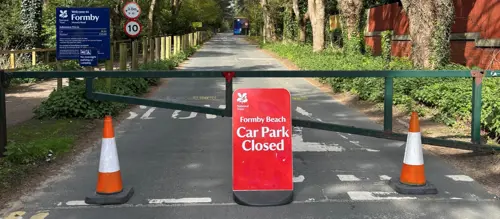Formby is one of the fastest changing stretches of coastline under the National Trust’s care.
Restoring rare sand dune habitats
Coastal sand dune habitats are a sanctuary for special plants, insects, birds, reptiles and amphibians; the Sefton Coast is home to 40% of the UK’s population of rare natterjack toads which breed in the dune pools also known as wet slacks.
Sand dunes need to be free to move. This movement is what creates the habitats that rare species such as natterjack toads and sand lizards need to thrive. Areas of naturally shifting, mobile sand are essential, but some of Formby’s sand dunes have become too stable and disconnected.
Dense scrub vegetation has taken over and unnatural elements including old construction rubble and dumped tobacco waste are creating barriers for natural processes.
Bringing new life to Formby’s dunes
As part of the Dynamic Dunescapes UK-wide project, the rangers at Formby have given nature a helping hand to restore rare dune habitats and bring new life to the sand dunes. The vision is to create space for sand to move more freely, which will restore natural processes and create healthier habitats for many important and rare species.
The team have used tried and tested conservation techniques to help restore these rare sand dune habitats including:
- Making notches or gaps in sand dunes where barriers have been created to natural processes
- Restoring and creating new natterjack toad breeding pools to give this rare amphibian the best opportunity to increase their declining population
- Removing invasive scrub such as sea buckthorn and Japanese rose (rosa rugosa) to create space for rare species to thrive
- Creating corridors where the sand dunes meet the woodlands to help these special habitats coexist.


